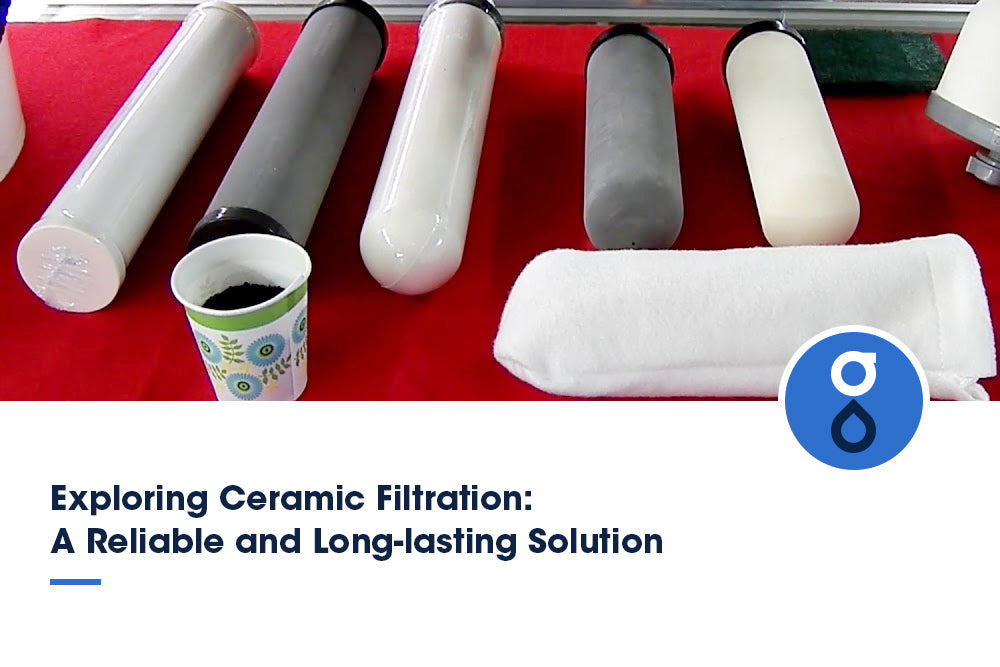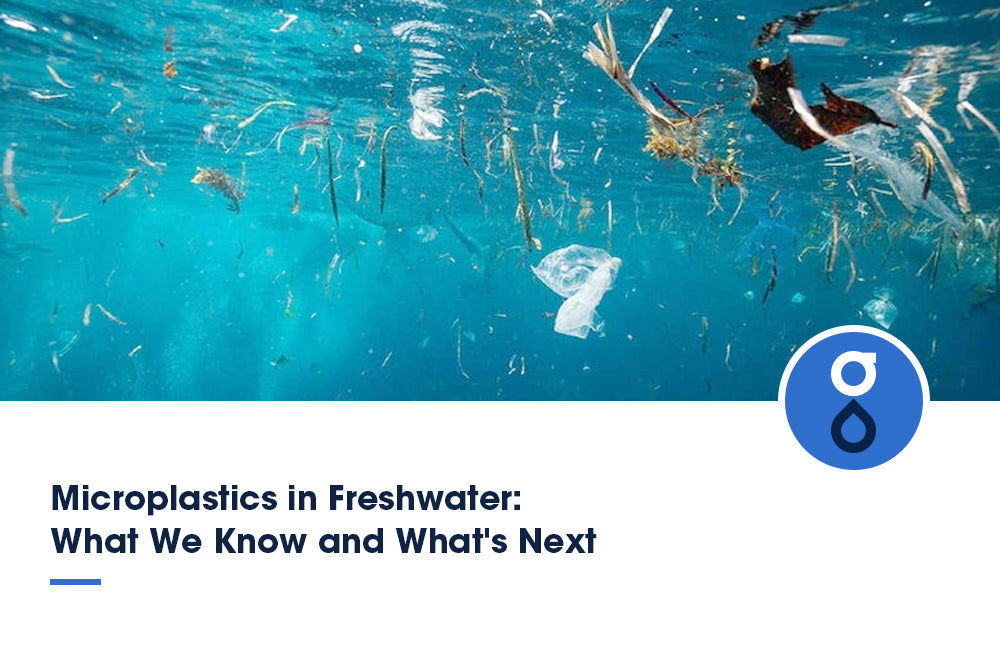Table of Contents:
Understanding PFAS contamination
U.S. Federal regulations on PFAS in drinking water
State-level guidelines for PFAS management
Strategies for PFAS removal and treatment
FAQs
Conclusion
Per- and polyfluoroalkyl substances (PFAS) refer to a large group of artificial chemicals used extensively in industrial and consumer products since the 1940s. These chemicals are characterized by strong carbon-fluorine bonds that make them resistant to heat, water, and oil. While these properties are desirable for non-stick cookware and stain-resistant fabrics, they also mean that PFAS persist in the environment and the human body.
There is growing concern about PFAS contamination of drinking water supplies and the potential health impacts of exposure through drinking water. This article provides an overview of current federal and state regulations and guidelines for PFAS in drinking water in the United States.
Understanding PFAS contamination

PFAS enter the environment through industrial discharge and from using and disposing of PFAS-containing products. These chemicals migrate into ground and surface waters used for drinking water. Two of the most widely studied PFAS are perfluorooctanoic acid (PFOA) and perfluorooctanesulfonic acid (PFOS).
Human exposure occurs through contaminated drinking water, food packaging materials, and stain-resistant, non-stick cookware. PFAS accumulates in the human body and direction has been linked to health effects, including increased cholesterol levels, decreased vaccine response in children, thyroid disease, and testicular and kidney cancers. The persistence and mobility of PFAS in the environment and raising awareness of potential health risks have led to efforts to monitor and regulate PFAS in drinking water supplies.
U.S. Federal regulations on PFAS in drinking water
Overview of National Primary Drinking Water Regulations (NPDWRs)
The Safe Drinking Water Act (SDWA) authorizes the United States Environmental Protection Agency (EPA) to set national primary drinking water regulations (NPDWRs) to protect public health from contaminants in drinking water. NPDWRs include mandatory maximum contaminant level goals (MCLGs) and enforceable maximum contaminant levels (MCLs) for particular pollutants.
MCLGs are non-enforceable health-based goals set at levels below which no adverse health effects from the contaminant are expected. MCLs are the enforceable standards set as close as feasible to the MCLGs after considering treatment's cost and technical feasibility. Public water systems are required to treat water to below MCLs for the regulated contaminants.
Role of the Environmental Protection Agency (EPA)
The EPA conducts regular reviews to identify contaminants that may require regulation under the SDWA. The agency evaluates PFAS as drinking water contaminants that may warrant federal law. As an interim step, the EPA has established non-enforceable drinking water Health Advisories (HAs) for PFOA and PFOS to guide state regulators and public health officials.
EPA’s Strategic Roadmap for PFAS Management in Drinking Water

In October 2021, the EPA released its PFAS Strategic Roadmap outlining actions to address PFAS pollution nationwide. For drinking water specifically, the Roadmap states EPA’s intention to evaluate the establishment of national primary drinking water regulations for PFOA and PFOS. A regulatory determination is expected by 2023 on whether regulating these two chemicals in drinking water is warranted under the SDWA.
Federal Maximum Contaminant Level Goals (MCLGs)
Currently, no PFAS have federal MCLGs or enforceable MCLs under the SDWA. In 2016, the EPA issued a non-enforceable lifetime health advisory (LHA) of 70 parts per trillion (ppt) for the combined levels of PFOA and PFOS in drinking water. This LHA provides a margin of protection from adverse health effects for sensitive populations like infants and lactating mothers over a lifetime of exposure.
In June 2022, the EPA significantly lowered the LHA levels for PFOA and PFOS to near zero, at 0.004 ppt and 0.02 ppt, respectively. The EPA stated that the updated LHA levels now reflect the agency's best available peer-reviewed science on the adverse health impacts of these two PFAS. While not legally enforceable, the revised LHA levels can inform efforts by federal, state, and local agencies to address PFAS in drinking water.
Notification Levels for Public Water Systems (PWSs)
In addition to the LHA, the EPA has also established a non-regulatory Notification Level of 10 ppt for PFOA and 40 ppt for PFOS for public water systems (PWSs) based on the capabilities of existing analytical methods. Exceeding this Notification Level triggers PWSs to consider actions like targeted monitoring, treatment improvements, and public notification. However, the response is not mandatory to exceed the Notification Level itself.
State-level guidelines for PFAS management

In the absence of federal regulatory standards, many states have moved forward with setting their drinking water guidelines and regulations for PFAS chemicals:
- At least 29 states have proposed or established drinking water guidelines for certain PFAS substances, most commonly PFOA and PFOS. State guidelines range from 2 ppts in New Hampshire to 500 ppts in Texas.
- Five states (Michigan, New Hampshire, New Jersey, New York, and Vermont) have legally enforceable MCLs for certain PFAS compounds. For example, New Hampshire's MCLs for PFOA, PFOS, PFHxS, and PFNA have a combined limit of 70 ppt.
- Some states use EPA's LHA levels as guidance or have guidelines in line with LHA concentrations. Others have set more stringent levels than EPA's non-enforceable LHA.
- States are actively reviewing and revising their PFAS drinking water guidelines and regulations as toxicity data evolves. For instance, Vermont adjusted its MCL for PFOA downward from 20 ppt to 10 ppt in 2022 based on new science.
Strategies for PFAS removal and treatment

Public water systems with PFAS levels exceeding regulatory limits and health advisories need effective treatment solutions. Several established technologies can remove PFAS to low or non-detect levels:
Physical treatment methods
The physical treatment methods for addressing PFAS contamination involve using various techniques to remove or reduce the levels of these harmful chemicals in water sources.
- Granular activated carbon (GAC) adsorption is one of the most proven, practical methods for removing PFAS from drinking water. PFAS compounds adsorb onto the porous GAC surface. GAC filters need regular replacement when saturated.
- Reverse osmosis (RO) forces water through a semipermeable membrane that filters out PFAS and other contaminants. Treated water recovery is ~50-85% based on system configuration.
- Ion exchange (IX) resins exchange PFAS anions in the influent water for non-polluting anions like chlorides on the resin. Resin replacement is needed once exhausted.
Chemical treatment methods
To address PFAS contamination, consider utilizing chemical treatment methods like oxidation or coagulation. These methods effectively break down and remove PFAS compounds from water.
- Electrochemical oxidation/reduction degrades PFAS compounds into safer components using electrically generated reactive oxidizing or reducing agents.
- Chemical oxidation destroys PFAS through reactions with oxidizing agents like hydrogen peroxide, persulfate, or ozone. However, incomplete oxidation can generate intermediate byproducts.
Emerging technologies for PFAS removal
Research is ongoing into novel, more cost-effective technologies for removing PFAS, including:
- Advanced oxidation using UV irradiation coupled with catalysts.
- Plasma-induced oxidation generates highly reactive species to destroy PFAS.
- Biofiltration through engineered media with immobilized PFAS-degrading microbes.
- Foam fractionation to selectively concentrate and remove PFAS surface active agents.
- Destruction of PFAS compounds at high temperatures.
Implementing treatment technologies that substantially reduce PFAS to meet evolving regulatory standards can represent significant costs for some smaller water systems. Government funding and support will be critical for communities impacted by PFAS contamination.
FAQs
How long does it take for PFAS to break down in the environment?
PFAS can take a long time to break down in the environment, sometimes decades. They are resistant to degradation and can persist in soil, water, and air, posing potential risks to human health.
Can PFAS be removed from drinking water using household filtration systems?
Yes, household filtration systems can remove some PFAS from drinking water. However, it's important to note that not all types of PFAS can be effectively eliminated by these systems. Therefore, choosing a filtration system specifically targeting PFAS is crucial. To ensure proper treatment, it is advisable to consult with experts in this field.
Besides drinking water, how else can I be exposed to PFAS?
PFAS intake can occur through food packaged in PFAS-containing materials, consumption of fish from contaminated waters, use of stain- and water-resistant products, cosmetics, cleaning products, and more.
Conclusion
Addressing PFAS in drinking water is an emerging public health issue. While federal regulatory standards are still pending, state guidelines and health advisories indicate the importance of reducing exposure to these highly persistent chemicals. Installing treatment technology capable of substantially decreasing PFAS levels will become an increasingly urgent priority for many public water systems. Continued research into PFAS toxicity and cost-effective treatment technologies is needed to manage this challenge and ensure the safety of our vital water supplies. Concerted action by regulators, water utilities, and local communities is necessary to tackle the complex problem of PFAS contamination.
















